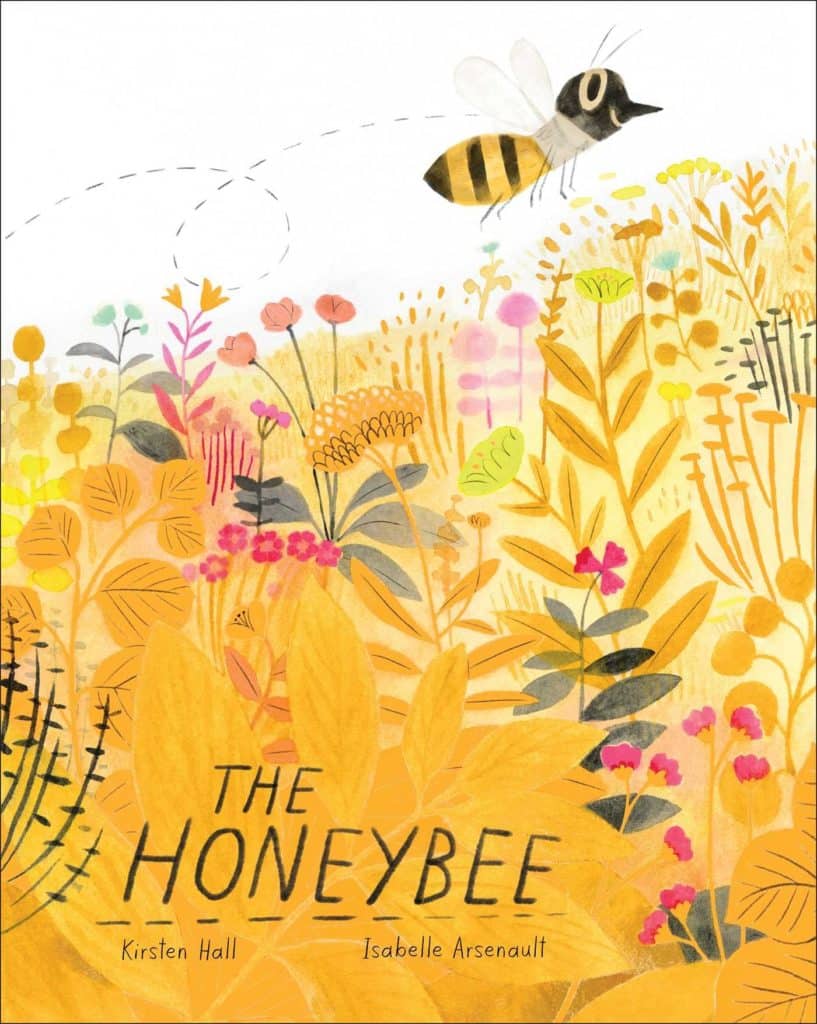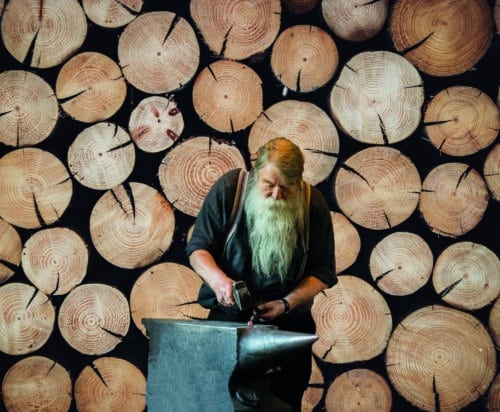Bees are not just creatures that flit from flower to flower; they are essential pollinators that support our planet’s delicate ecosystem. Their colonies are models of efficiency and cooperation, and their honey is a miracle of nature. For those seeking to dive deeper into the world of these remarkable insects, books about bees can offer rich insights and fantastic journeys. If you’re a bee enthusiast or simply someone who appreciates the profound role bees play, these books about bees are the nectar you’ve been searching for.
Imagine a world without bees; such a scenario would be catastrophic for our ecosystems. Bees are pivotal in pollination, a process critical for the reproduction of many plants and the production of a significant portion of our food supply. Without bees, crops would fail, food scarcity would rise, and we would lose a vast amount of biodiversity, disturbing the balance of nature. This alarming domino effect could lead to a collapse in ecosystems, resulting in far-reaching consequences for all life forms on Earth.
In addition to their ecological significance, bees have also been imbued with spiritual and cultural importance across various traditions. A testament to this is their special mention in the Quran, Islam’s sacred text, where bees are honored in Surah An-Nahl, also known as ‘The Bee.’ It is in this chapter that the Quran reflects on bees’ miraculous nature, emphasizing their disciplined way of life and the purity of the honey they produce, which is mentioned as a source of healing for humanity. This divine highlight underscores the reverence bees have commanded for millennia, intertwining spirituality with our appreciation of their crucial role in our world.
10+ Beautiful Books About Bees

The books about bees listed here are but a few samples of the delightful troves of bee literature that await the curious reader. As you turn the pages of these volumes, you’ll not only add to your knowledge about the invaluable role bees play but will likely begin to view these remarkable creatures in a new light. So whether you’re looking for a heartwarming tale, a critical look at the environmental issues affecting bees, or a magnificently illustrated journey through the bee kingdom, the books about bees below are excellent choices for your reading list.
If you’re looking for a heartwarming novel that will make you laugh, cry, and feel all the emotions in between, then “The Music of Bees” by Eileen Garvin is a must-read. This novel tells the story of three unlikely friends who come together because of their love for bees. Alice, Jake, and Harry are all misfits in their own way, but they find solace and purpose in each other’s company. As a beekeeper herself, Garvin weaves fascinating information about bees into the plot, making it an educational read as well as an entertaining one.
Alice is a forty-something widow who feels stuck in her life after her husband’s death. She works at a local hardware store but dreams of owning her own farm someday. Jake is an eighteen-year-old paraplegic who lost the use of his legs after a party accident. He feels like he has no future until he meets Alice and starts helping her with her bees. Harry is a twenty-four-year-old man who has made some mistakes in his life but wants to turn things around. He ends up working for Alice as well and becomes an integral part of their little beekeeping community.
The three characters are distinct and unique, but they all share a deep love for bees. Through their interactions with each other and with the bees, they learn valuable lessons about life, friendship, and resilience. Garvin does an excellent job of portraying each character’s struggles without making them seem pitiful or overly sentimental. Instead, she shows how even broken people can find hope and joy in unexpected places.
One thing I loved about this book was how much I learned about bees. Garvin clearly knows a lot about these fascinating creatures and shares that knowledge in an accessible way throughout the novel. I found myself wanting to start my own beekeeping adventure after reading this book! But even if you’re not interested in bees, the story itself will keep you hooked. There are plenty of plot twists and turns that will keep you guessing until the very end.
Another thing I appreciated about “The Music of Bees” was how it tackled some heavy topics without being overly depressing. Alice, Jake, and Harry all have their fair share of problems, but they don’t dwell on them or let them define their lives. Instead, they focus on what they can do to make things better for themselves and each other. Their friendship is a testament to the power of connection and community.
In conclusion, “The Music of Bees” is a wonderful novel that will leave you feeling uplifted and inspired. It’s a story about three misfits who find purpose and joy in beekeeping and in each other’s company. Garvin’s writing is engaging and informative, making this book both entertaining and educational. If you’re looking for a feel-good read that will make you think about life in a new way, then “The Music of Bees” should be at the top of your list. Give it a try – you won’t be disappointed!
Bees, with their tiny wings and fuzzy bodies, hold a special place in our hearts. These creatures are not only fascinating but also essential to our ecosystem. So, when I stumbled upon the book “Bees & Their Keepers” by Lotte Möller, I knew I had to read it. This cultural history delves into the world of bees and beekeeping from ancient times to the present day.
Möller takes us on a journey through the beekeeper’s year, describing in vivid detail the activity in the hive and the natural order and habits of bees. Her deep knowledge and sharp wit shine through as she explores the myths of the past and how they have been replaced by fact over time.
One of my favorite parts of Bees & Their Keepers is Möller’s encounters with various colorful characters during her travels. From a trigger-happy California beekeeper raging against both killer bees and bee politics to the legendary Brother Adam of Buckfast Abbey, breeder of the Buckfast Queen popular around the world – each story is engaging and unique.
The illustrations throughout “Bees & Their Keepers” are another highlight that adds depth to Möller’s writing. The beautiful images bring her words to life, making it easier for readers to picture everything from honeybees buzzing around lavender fields to Queen bees laying eggs.
Additionally, Möller discusses how bees’ roles have evolved over time from being seen as divine beings worthy of worship to being studied scientifically for their contributions to our ecosystem. She also touches on modern challenges facing beekeepers today such as colony collapse disorder (CCD) and how different countries are tackling these issues.
In conclusion, Lotte Möller’s “Bees & Their Keepers” is a fantastic book for anyone interested in bees and beekeeping. From ancient myths to modern challenges, she covers it all in an engaging and informative way. The illustrations are stunning, and the stories she shares are captivating. This book is perfect for beekeepers looking to deepen their knowledge or anyone who wants to learn more about these fascinating creatures. If you’re looking for a book that will leave you buzzing with excitement, look no further than “Bees & Their Keepers“
Bee Quest
Bees are an essential part of our ecosystem. They play a crucial role in pollination and maintaining the balance of nature. However, with the increase in urbanization and industrialization, the population of bees is declining rapidly. In his book, “Bee Quest,” Dave Goulson takes the readers on an exciting journey to discover some of the rarest bees around the world. The book is not only informative but also humorous and heartwarming.
Dave Goulson’s passion for bumblebees is contagious. His quest to search for some of the rarest bees across different continents is fascinating. He combines his technical expertise with easy-to-understand language that makes it an enjoyable read for everyone. The book takes you on an adventure from Patagonia to Poland, from Ecuador to Essex, where you learn about different species of bees and their habitats.
One of the significant takeaways from Bee Quest is that it highlights how much we depend on bees for our survival. Bees play a crucial role in pollinating crops and plants that provide us with food and oxygen. Without them, our ecosystem would be severely damaged. Goulson’s message is clear – we need to protect these little creatures if we want to save ourselves.
Bee Quest is filled with interesting facts about bees that most people aren’t aware of. For instance, did you know that some male bees don’t have fathers? Or that honeybees can recognize human faces? These bizarre yet captivating facts make Bee Quest a fascinating read.
Goulson’s writing style is warm and humorous, making it easy to connect with him as he shares his experiences while searching for rare bees worldwide. You’ll find yourself laughing out loud at some of his witty remarks and anecdotes. His passion for bees is evident throughout the book, and it’s contagious.
In conclusion, Bee Quest is a must-read for anyone who wants to learn more about the environment and how we can protect it. Dave Goulson’s writing style makes it an enjoyable read, and his passion for bees is inspiring. The book highlights the importance of these little creatures in our ecosystem and how much we depend on them. It’s a book that will leave you informed, entertained, and ready to make a difference in the world. So if you’re looking for an engaging read that combines humor with environmentalism, then Bee Quest is the book for you.
Peering through the lens of Wild Honey Bees: An Intimate Portrait, one is transported to the secret world of forest-dwelling honey bees. Written by Ingo Arndt, a world-renowned wildlife photographer, and Jürgen Tautz, a leading bee expert, this collaboration is a love letter to the humble but mighty pollinator—exquisitely captured on film and profoundly dissected from a scientific perspective.
Wild Honey Bees embarks on an adventure less traveled, delving into the haven of wild honey bees, still nestled in the hollow tree trunks of unspoiled forests. Densely rich with vibrant photographs, readers are given a front-row seat to observe these resilient creatures in their natural, undisturbed settings. From the exploratory tales of nectar gathering and the intricacies of hive existence, Wild Honey Bees teems with life, bringing a fresh perspective to the docile insect that vibrant on the page.
Every turn of the page in Wild Honey Bees reveals a treasure, not only for the eyes but for the mind. The text unpacks the lives of these endangered beings, peppering the narrative with sensational insights that are poised to revolutionize apiary conservation and management. The began provides this vital research wrapped in a captivating narrative, making it not only an academically sound piece but a stirring call to arms for preservation.
Arndt’s photography coupled with Tautz’s expertise makes for an unbeatable combination in Wild Honey Bees. The images are not merely striking; they are a bridge to understanding the bees’ resilient adaptations and the challenges they face from our changing world. Simultaneously, the scientific underpinning of bees’ behavior and environmental impacts gives the book an edifice of credibility and tangibility, allowing readers to comprehend the broader implications.
Wild Honey Bees is a rare work, one that marries the aesthetic appeal of natural history with the pressing need for environmental stewardship. It is an evocative piece that will appeal to anyone who has marveled at the intricacies of the natural world. Arndt and Tautz have not only produced a trove of invaluable knowledge but a striking testament to the beauty and importance of wild honeybees.
For those who hold nature in high regard, Wild Honey Bees: An Intimate Portrait occupies the essential place any collection would be honored to feature. Its sights and insights are a balm for the soul and could very well hold the key to the future under threat.
In his enlightening masterpiece, The Mind of a Bee, Lars Chittka takes readers on an unadulterated journey into the intellectual marvel that is the humble honeybee. This isn’t just another book espousing the collective wisdom of hive minds; rather, it’s an assertion that bees, as individuals, constitute a form of intelligence so remarkable that it challenges our perception of animal cognition.
Chittka, renowned in the field for his groundbreaking research, establishes the prowess of bees by delving into their intricately evolved behaviors. He strips away the preconception of insects as mere automatons, showing through meticulous studies and anecdotes their diverse range of cognitive functions. Bees are not only capable of recognizing human faces, a trait long believed to be unique to mammals, but they also display a basic spectrum of emotions, learn through observation, and possess the capacity for problem-solving.
The author achieves an impressive fete – making the study of bee cognition accessible and, most importantly, engrossing to the lay reader. He juxtaposes their innate skills with the captivating history of apiology, adding a layer of historical charm to the scientific exploration at hand. Moreover, what elevates this work is Chittka’s discerning examination of ethical quandaries. As we comprehend the depth of bee intelligence, the treatment of these vital pollinators in conservation efforts and scientific research is brought sharply into focus.
The Mind of a Bee is not just a must-read for apiculturists and cognitive scientists; it’s for anyone with an inquisitive mind. It ignites a newfound respect for bees, one that is based not merely on their eco-systemic importance but on an appreciation for their cognitive individuality. As our world grapples with the consequences of habitat destruction and climate change, The Mind of a Bee assumes a prescience – an insistence that the understanding of animal kin requires a paradigm shift.
Chittka’s narrative is structured with a deft hand, balancing insights with empirical evidence in a manner that is both digestible for the non-specialist and rigorous for the academic. It stands as an invitation to consider the vast array of consciousness present in our fellow Earth inhabitants, thereby expanding the horizons of empathy. In doing so, The Mind of a Bee is not just a scientific treatise; it’s an advocacy for a kinder, more informed coexistence with the natural world.
Matt Kracht’s latest addition to the naturalist’s library, “OMFG, BEES!: Bees Are So Amazing and You’re About to Find Out Why,” is a delightful celebration of these underappreciated pollinators. The author, renowned for his playful yet informative approach to nature writing, brings his signature blend of humor and insight to the enthralling world of bees.
Kracht’s book is a refreshing take on a subject that’s typically approached with academic gravitas. With its compact size and engaging color illustrations, “OMFG, BEES!” is an accessible read for bee aficionados of all ages, from the casual insect enthusiast to the seasoned beekeeper. It’s clear that Kracht is not only an enthusiastic advocate for bees but a keen observer of the remarkable behaviors and characteristics that make them so vital to our ecosystem.
The book is divided into several sections that explore different aspects of bees’ extraordinary lives, including their roles in the hive, their intriguing mating habits, and their complex communication systems. Each page bursts with bite-sized facts that challenge the common perception of bees as mere buzzing pests. In fact, Kracht points out that one in every three bites of food we eat is thanks to these tiny, often overlooked creatures.
However, “OMFG, BEES!” isn’t just a humorous handbook on bee facts; it serves a more significant purpose. By taking a lighthearted and engaging approach, Kracht succeeds in making the case for bees as fascinating subjects worthy of our admiration and protection. He cleverly intertwines illustrations and anecdotes to convey a crucial message: bees are not just important—they’re integral to our very existence.
Where this book truly shines is in its ability to unite comedy and conservation. Through wit and charm, Kracht underscores the pressing need to safeguard bee populations, never letting readers forget that the survival of bees and the health of our planet are inextricably linked. “OMFG, BEES!” is a vibrant call to action, encouraging us to appreciate these essential creatures and support the efforts to preserve their habitats.
In sum, Matt Kracht’s “OMFG, BEES!” is a gem of a book that deserves a spot on any nature lover’s shelf. With its engaging prose, eye-catching visuals, and essential reminder of bees’ critical role, this work is an un-bee-lievable amalgamation of fun and learning. Whether you read it cover to cover or flip through for a quick dose of bee-spirational content, “OMFG, BEES!” is a book that will leave you buzzing with appreciation for the incredible world of bees.
If you’re a beekeeper or just fascinated by these incredible creatures, I highly recommend this outstanding book, The Lives of Bees.
Written by the esteemed researcher and writer, Seeley, who is an expert in the field of honey bees, The Lives of Bees is a treasure trove of knowledge. After years of study and research, Seeley delivers valuable insights into the genetics, health, and natural habits of wild honey bees.
By contrasting standard beekeeping practices with the behaviors of successful wild colonies, Seeley provides scientific support for alternative beekeeping methods. His practical suggestions can help beekeepers adapt their practices for the benefit of their colonies and their own beekeeping endeavors.
By following Seeley’s advice, beekeepers can raise stronger colonies that are more equipped to overcome the challenges of domestic beekeeping.
If you’re ready to delve into the untold story of honey bees in the wild and revolutionize your beekeeping practices, The Lives of Bees is a must-read. Get ready to be amazed by the fascinating lives of bees.
Thor Hanson’s “Buzz: The Nature and Necessity of Bees” is a delightful journey into the diverse world of bees, uncovering the intricate and vital role these tiny creatures play in our ecosystem. From the buzzing of summer meadows to the scientific debate that now surrounds their survival, Hanson brings a storytelling flair to the pages that will captivate both novice nature lovers and scholarly bee enthusiasts alike. He weaves an engaging narrative that traverses scientific research and the entwined history of bees and humanity.
Buzz: The Nature and Necessity of Bees is a passionate ode to the overlooked species that is essential for life as we know it. Its purpose is clear: to shift our perspective from seeing bees as simply providers of honey to the much larger and crucial role they play in pollinating our agricultural landscapes. It does so by introducing a wide array of bee trivia, from the minute details of their biology to the breathtaking diversity of their species, complemented by black-and-white images that offer a fleeting yet intimate look into the bees’ bustling, albeit often unseen, world.
Thor Hanson’s engaging style reaches its apex in the chapters that delve into the current threats facing bees. He seeks not only to inform but to inspire action, challenging each reader to consider their role in the stewardship of nature. He’s remarkably even-handed when discussing the politics of conservation and pesticide use, presenting a multifaceted issue that calls for both personal and societal responses.
However, while Buzz: The Nature and Necessity of Bees is a rich tapestry of scientific discovery and natural wonder, some readers may find themselves wishing for more color in its offerings. The inclusion of more of the USGS Bee Inventory and Monitoring Lab’s stunning macro photographs could have enriched the visual experience and made the book a more comprehensive showcase of bee beauty.
Nonetheless, in “Buzz: The Nature and Necessity of Bees“, Hanson achieves the not-so-simple feat of taking a subject that is both vast and microscopic and makes it accessible without dumbing it down. His work is a clarion call to appreciate the delicate but essential creatures that ensure the blooms on our fruit trees and the honey on our tables. This is a book that sings with the love of its author for the topic and is sure to resonate with anyone captivated by the wonders of the natural world.
The world is abuzz with the sounds of nature’s hardest workers, and Kirsten Hall’s book, The Honeybee, speaks for them. In this delightful picture book, Hall takes readers on a journey from the flower to the hive and back again, introducing us to the crucial role that bees play in our environment. With rich language and stunning illustrations by Quebec illustrator Isabelle Arsenault, The Honeybee strikes an ideal balance between fact and fiction that will satisfy both young readers at bedtime and teachers in the classroom.
Kirsten Hall’s language in The Honeybee is as lively as a hive buzzing with activity. Her use of rhymes and repetition makes this picture book a joy to read aloud, capturing the attention of children and adults alike. From the beginning of the narrative to its end, Hall’s writing creates a sense of perpetuity that mirrors nature’s cycles perfectly.
Quebec illustrator Isabelle Arsenault brings Hall’s words to life with her signature mixed-media style. Using gouache and pencil, Arsenault creates stunning images that are predominantly yellow and black but accented with pops of blue and fuchsia flora. Her illustrations capture the beauty of nature while also showcasing the importance of bees in our ecosystem.
Hall and Arsenault are an ideal match for one another, each taking their work to new heights. Their collaboration ensures that neither text nor images overshadow one another; instead, they work together seamlessly to create a beautiful storybook experience.
The Honeybee balances fact with fiction perfectly. It provides enough scientific detail about bees’ roles in our ecosystem without overwhelming younger readers or detracting from the story itself. This balance makes it an ideal resource for parents or educators looking to teach children about environmentalism in a fun way.
In conclusion, Kirsten Hall has created a remarkable picture book in The Honeybee. It introduces young readers to the crucial role that bees play in our environment while also capturing their attention with lively language and stunning illustrations. Hall and Arsenault’s collaboration is a perfect example of how text and images can work together seamlessly, creating a beautiful storybook experience that will delight children and adults alike. The Honeybee is a must-read for anyone looking to teach children about environmentalism or simply enjoy a delightful bedtime story.
Bees are one of the most fascinating creatures in the animal kingdom, and their contribution to our ecosystem is immeasurable. From pollinating our crops to producing honey, bees play a vital role in our daily lives. If you have a serious interest in bees and bee-keeping, then “The Anatomy of a Honey Bee” is a must-read book for you. This vintage treatise was first published in 1910 and provides an in-depth look at the anatomy, physiognomy, and natural history of honey bees.
“The Anatomy of a Honey Bee” is divided into various chapters that cover different aspects of bee anatomy. One chapter focuses on the external structure of insects, while another chapter delves into the head and its appendages. There are also chapters that cover topics like antennae and their sense organs, mandibles and their glands, proboscis, epipharynx, thorax and its appendages, wings and their articulation, among others. The level of detail provided in each chapter is truly remarkable.
One thing that sets this book apart from others is its vintage charm. The illustrations in the book are beautifully drawn by E.F. Phillips and provide an accurate representation of bee anatomy. Additionally, there are several photographs included that offer a glimpse into beekeeping practices from over a century ago.
The author’s writing style is engaging throughout the book. While some parts may be technical for beginners, it is an excellent resource for those with prior knowledge or experience with bees. It provides detailed information on how to keep bees healthy and productive as well as how to identify different types of bees based on their physical characteristics.
Another great aspect of this book is that it has been republished in a modern, high-quality edition. The new edition includes a specially commissioned introduction on beekeeping, making it an even more valuable resource for those interested in keeping bees.
In conclusion, “The Anatomy of a Honey Bee” is a fascinating journey into the world of bees. It provides readers with an in-depth look at bee anatomy and offers practical advice on how to keep bees healthy and productive. This book is perfect for bee enthusiasts who want to deepen their knowledge about these amazing creatures. Its vintage charm and beautiful illustrations make it a joy to read, while the newly published edition makes it accessible and affordable for everyone. If you’re interested in learning more about bees or want to start your own beekeeping adventure, then The Anatomy of a Honey Bee is definitely worth checking out!
Cornell University Professor Thomas D. Seeley elegantly dissects the complex democratic processes at work in honeybees societies in his book “Honeybee Democracy,” redefining our understanding of community decision-making in both insect and human worlds. With a keen observational eye and a gift for storytelling, Seeley unfolds the journey of bee colonies as they seek out new homes, showcasing how their unique ‘swarm intelligence’ can give powerful insights into our own social structures.
At the heart of Seeley’s narrative is the quest for the perfect nest site. Hundreds of scout bees fan out to survey potential locations, each advocating for the spot they believe is best. Decisions are not made through one dominant leader’s edict, nor by compromise, but through a rigorous dance that conveys the details of these prospects. The level of enthusiasm in the waggle-dance is directly proportional to the scout bee’s belief in the site’s promise. Over time, others join the dance, and the collective sway of opinion leads to a final, democratic choice.
What emerges is a profound understanding of the interconnectedness of these tiny creatures. At first glance, one might be skeptical about the relevance of honeybees to our own, far more complex systems. And yet, Seeley’s work challenges this skepticism. The bees’ unwavering pursuit of the common good, combined with an adaptive flexibility to changing environments, offers a model for a balanced, decentralized approach to decision-making that modern humans could learn from.
While Seeley’s comparison of bees to social human systems is compelling, one could argue that the equilibrium of bee behavior is too finely tuned to be mirrored in the freer, more ambiguous environment of human governance. Nevertheless, Honeybee Democracy‘s rich tapestry of research findings, supported by engaging visuals, charts, and anecdotes, illustrates the disciplined and highly effective nature of the bees’ democratic process.
“Honeybee Democracy” is not just a celebration of the honeybee’s cogent governance. It is a call for a deeper examination of nature’s living systems and the potential wisdom they encase. Whether it’s contemplating a single honeybee or the countless interactions within a swarm, Seeley invites us to engage with this intimate, yet universal, democratic mechanism. Honeybee Democracy stands as a testament to the beauty and functionality of nature‘s small-scale democracies, inspiring us to look to the natural world for lessons that can enrich our collective human experience.
“The Bees in Your Backyard” is an indispensable tome for anyone captivated by the buzzing ecosystem that exists right outside our windows. Authored by Joseph S. Wilson, this book not only celebrates the splendor of the bee world with stunning images but invites readers on an educational journey that broadens their understanding of the critical role bees play in our environment.
Wilson’s work is more than just a compendium of bee species; it is a narrative that connects readers to the smallest, yet most vital, components of our ecosystem. The book’s strength lies in its careful curation of information. From richly detailed descriptions of each bee family and genus to practical tips on identifying these species and insights into their lifecycle, readers are armed with a wealth of knowledge that fosters a newfound respect for these pollinators.
The inclusion of over 900 high-quality photographs makes “The Bees in Your Backyard” a visual delight. These images are not just eye candy but serve an educational purpose, making it easier to recognize the subtle differences between various species. The book doesn’t shy away from scientific terms, yet it presents them in a manner that remains accessible. It’s a commendable achievement, balancing academic rigor with readability.
The chapter on attracting bees to one’s garden is particularly valuable. Wilson’s suggestions are down-to-earth, emphasizing the simple changes that can make a significant difference. This practical application encourages readers to take an active role in conserving bee populations and enhancing biodiversity.
While a comprehensive reference guide, “The Bees in Your Backyard” transcends mere academia. Its engaging narrative ensures that the sheer variety of bee life is unveiled, inviting readers to cultivate a connection with their local environment. It’s an ode to the wild spaces that often go unnoticed and unloved. For the dedicated reader, it’s also an inspiration to support conservation efforts and sustainable living.
I highly recommend “The Bees in Your Backyard” to anyone wishing to deepen their appreciation of nature and, especially, bees. It offers a comprehensive yet accessible look into the lives of bees and the importance of preserving their habitats. The ultimate message of the book is clear: bees are not just insects; they’re a cornerstone of our natural world, one that needs our protection. If you have ever been stung by curiosity about these essential creatures, this book is your salve.
As you savor the pages and ponder the profound mysteries of the bee world, you may find yourself more attuned to the hum of life – and the urgent need to protect it. Happy reading, and may these books about bees inspire you to appreciate and safeguard these tiny, vital companions of the Earth.























